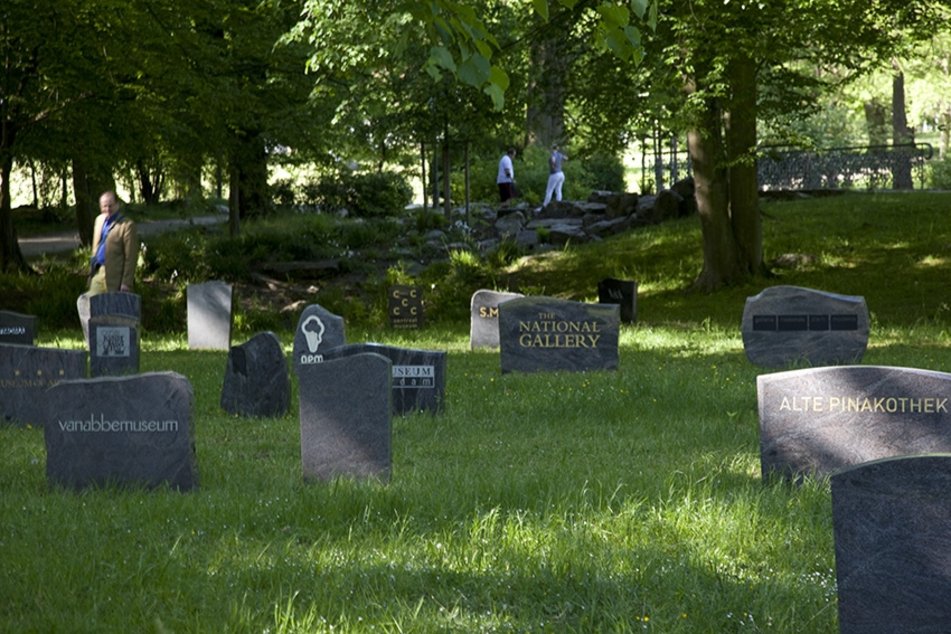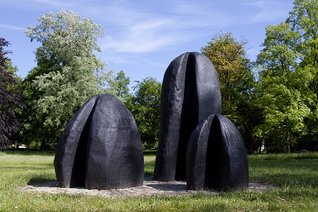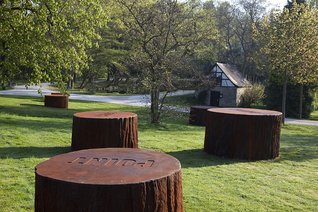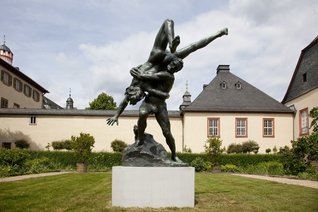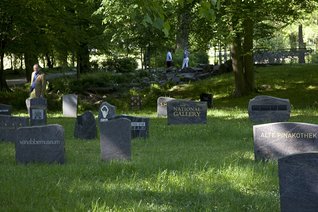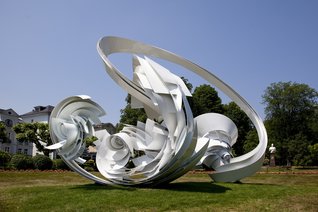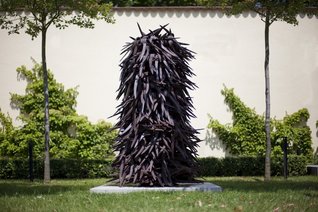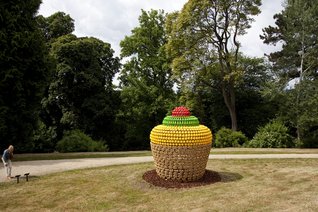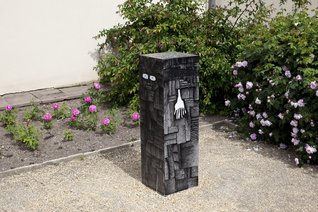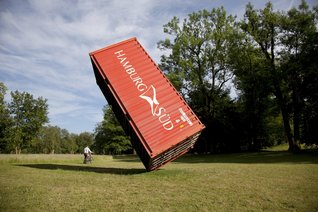Works
Falling Water - Bear Run II 11
In 1977, the U. S. sculptor Bryan Hunt began to focus on the phenomenon of the waterfall, whose dramatic plunging down from great height fascinated him. He set the extreme vertical element of the slender stele against his previous privileged lower floor works, in reference to his perception that the water fall might have "top and toe, but no beginning and no end". Furthermore he gives importance to the waterfall's relation to human height and to the fact that its perception depends from the wandering perspective of the eye. The constant, violent movement of the water requires a respectively "flowing" surface structure. Hunt realizes this by "drawing strands through the wet plaster with his fingers which has to happen very quickly and requires concentrated, active gestures. Thereafter he leaves sharp hard-edged marks in the material. While the stringy lines of movement correspond to the water cords, the sharp marks have no parallel within the form of water; however they provoke a physical and psychological effect in the observer, a feeling of resistance, that blends with the experience of foaming and breaking water" (R. Heidt, 1987). The bronze water current produces a flowing effect within the imagination of the observer – just like Claude Monet's "Water Lilies" – corresponding to the inner current of each work (G. Boehm). This emotionalized perception of the artwork is supplemented in Hunt's "Lake Pieces" and "Waterfalls" with classical titles like "Daphne", "Karyatide" or "Amphora" drawing a parallel to Ovid's metamorphoses. However, with "Bear Run", Hunt conjures the mythical place of his own youth (Indiana) where nature still seems to unfold in original wilderness.
